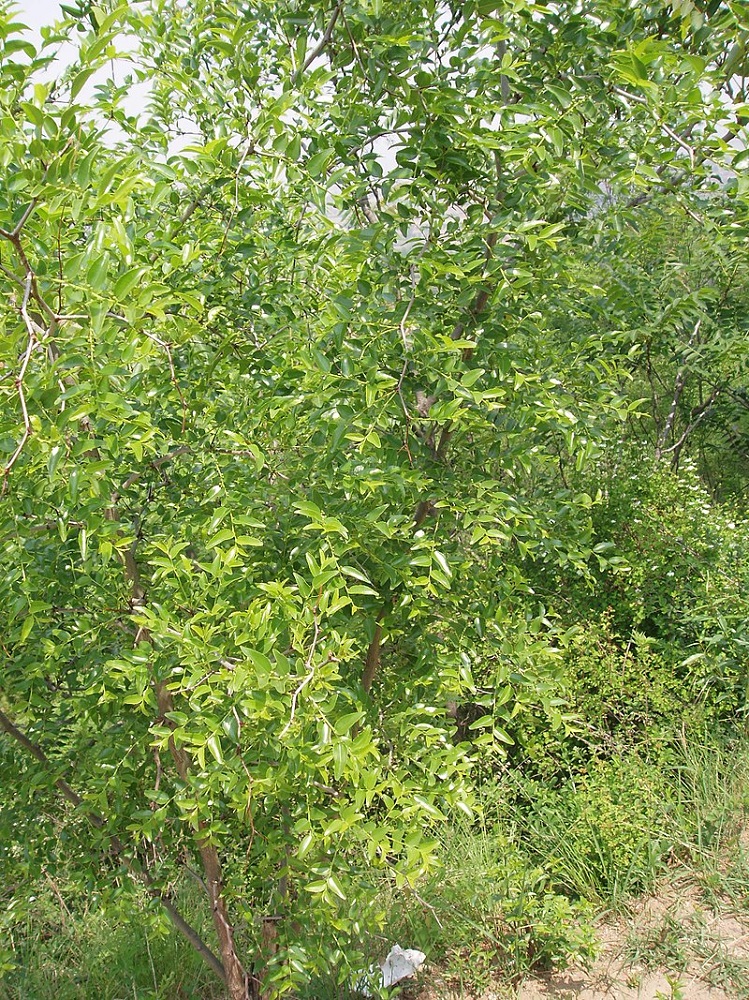Ber - Indian jujube

Ziziphus jujuba
Summary
Scientific Classification
Kingdom: Plantae
Division: Angiospermae
Class: Dicotyledonae
Order: Rhamnales
Family: Rhamnaceae
Genus: Ziziphus
Species: Z. jujuba
Scientific Name: Ziziphus jujuba
Common names
English : Ziziphus jujuba.
Hindi: Ber.
Kannada: Bore.
Marathi: Bor.
Description
- Habit and Habitat: Ziziphus jujuba is a thorny, small-sized and deciduous tree growing up to 10-12 m high. A small thorny tree.
- Distribution: : Ziziphus, is a genus of about 40 species of spiny shrubs and small trees in the buckthorn family, Rhamnaceae, distributed in the warm-temperate and subtropical regions throughout the World.
- Morphology:
Leaf: : Small, ovate or roundish, slightly oblique, glabrous above, buff hairy below, 3-nerved, stipulate, stipules spiny-one straight and other hooked.
Inflorescence: axillary cymes.
Flowers: Greenish-yellow, Calyx 5-fid, hairy, Petals 5, hooked, rounded.
Androecium: Stamens 5, enclosed in the petals, Disk with 10 grooved lobes.
Gynoecium: Ovary half sunk in disk, ovoid, styles 2, connate for about half their length.
Fruit: Drupacious globose, smooth, yellow, red all when ripe.
Seedss: : The seed of Ziziphus jujuba is enclosed into a globose en rough stone. The stone is 1-1.5 cm across and contains one seed.
Flowering and Fruiting time: September – October. - Propagation: By seed, but commonly by grafting and budding.
- Importance:
a. The main biologically active components are vitamin C, phenolics, flavonoids, triterpenic acids and polysaccharides.
b. Recent phytochemical studies of jujube fruits have shed some light on their biological effects, such as the anticancer-, antiinflammatory-, antiobesity-, immunostimulating-, antioxidant-, hepatoprotective-, gastrointestinal protective activities and inhibition of foam cell formation in macrophages.
c. Leaves used for scorpion stings.
d. Leaf, Fruit: Used as a laxative and blood purifier, has anticancerous property, Considered to be pectoral. Roots used for fever. Eaten fresh, also candied, and used in desserts.
e. The fruit also has a long history of medicinal uses, candy, juice, wine, vinegar, jam, jelly, slices and powder, as well as fresh cut fruit. - Location: New Building.
 Trees of GSS Project supported by Makerspace Belgaum Website concept and designe by
Trees of GSS Project supported by Makerspace Belgaum Website concept and designe by